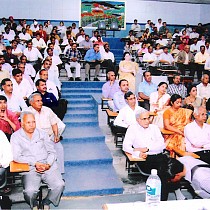SEASONAL ABUNDANCE OF INSECT PESTS AND THEIR MAJOR NATURAL ENEMIES IN CORIANDER CORIANDRUM SATIVUM LINN.
Department of Entomology, SKN College of Agriculture (SK Rajasthan Agricultural University) Jobner – 303329, India
R.K. PAREEK, ASHOK SHARMA AND K.C. KUMAWAT
The coriander crop was found infested by aphid, Hyadaphis coriandri (Das); whitefly, Bemisia tabaci (Genn.); thrips Thrips tabaci Lind. and mite, Petrobia latens (Muller). Among these, the coriander aphid was found as major as one and its infestation started in the last week of January and remained throughout the crop season during both the years of study (rabi, 2004–05 and 2005–06). The aphid population peaked in fourth week of February during both the years. The peak activity of the aphid was observed at 30.1 °C maximum and 9.7 °C minimum temperature with relative humidity 78 per cent in morning and 31 per cent in evening during rabi, 2004–05 and at 32.7 °C maximum and 12.1 °C minimum temperature with relative humidity 75 per cent in morning and 27 per cent in evening during rabi, 2005–06. A positive significant correlation was observed between aphid population and maximum temperature, whereas, minimum temperature, relative humidity and rainfall exhibited non–significant correlation. Three coccinellid species, viz., Coccinella septempunctata L., Menochilus sexmaculatus (Fab.) and Adonia variegata (Geoze) were found to predate upon the aphid, H. coriandri. Out of these, C. septempunctata was found to be dominant one. The occurrence of predator C. septempunctata coincided with the population of aphids during both the years.


